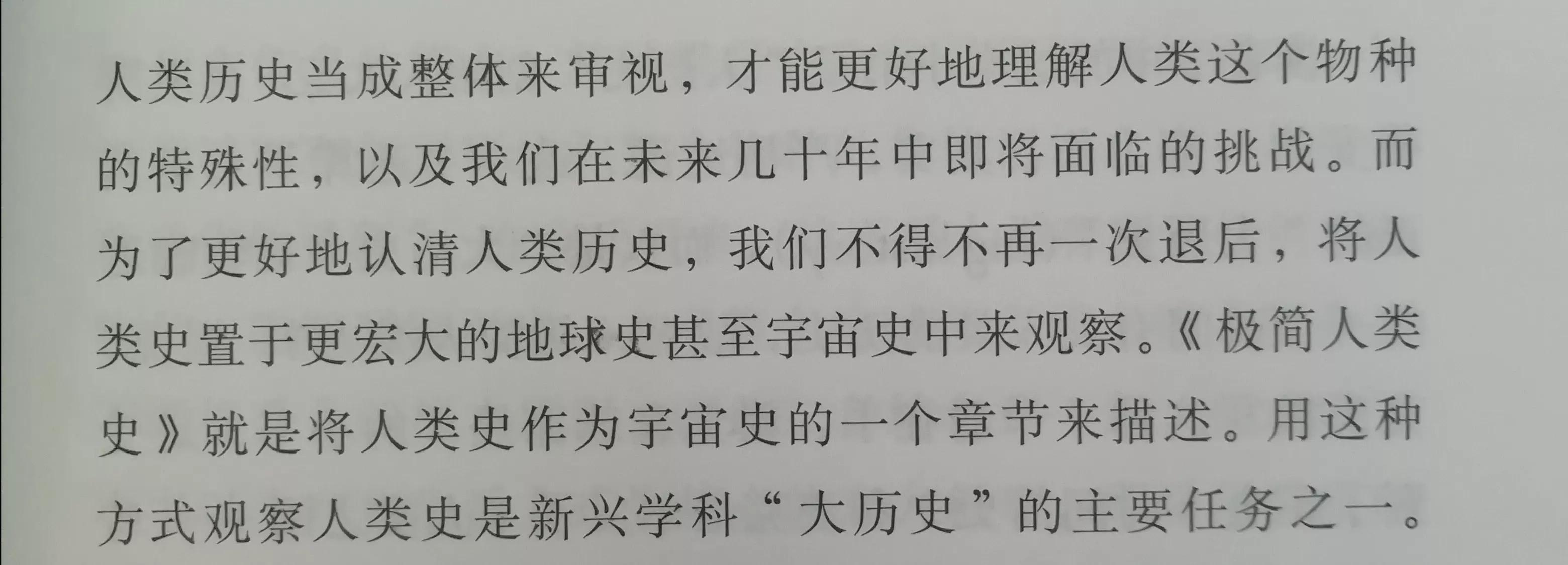
"Minimalist Human History" presents a large-picture, panoramic historical narrative. In the author's words, the goal of world history should be to tell the story common to all peoples, because we belong to humanity.
The book's narrative has also been questioned: economic power has always prevailed over cultural intelligence; there is a lack of personal descriptions.
Author David Christian said in "To Chinese Readers" that only by taking a step back from the history of their respective countries and nations and examining human history as a whole can we better understand the particularity of human beings and the challenges they will face in the future.
Taking a step back and looking at the history of mankind in the context of the history of the earth or even the history of the universe, this is the "big history."
The authors point out that the earliest humans appeared in Africa about 250,000 years ago. The most powerful symbol of humans and other close relatives is the language symbol, and only humans are the only creatures that can communicate using language. Because of the language, knowledge and experience can be accumulated and passed on. "Learning together" has enabled human beings to adapt to the changing natural and social environment, and culture has transcended natural selection as the primary driving force for change.
The author uses a large scale to macroscopically divide human history into three periods: the era of gathering and hunting, the era of farming, and modern times.
The "Hunter-Gatherer Era", also known as the "Paleolithic Age", is the longest era to date, laying the foundation for human history. Human society as a whole relies on hunter-gatherers, not through cultivation and manufacturing, to obtain food and other necessities.
The "agricultural era" is the era in human history in which agricultural production technology has dominated absolutely and has become the foundation of human society, which has lasted for 10,000 years. The technological changes of this era were intensive (it enabled more people to survive in a given region), and the ecological and social environment in which humans lived was radically revolutionary: hierarchies emerged, cities and states were born, and "agrarian civilizations" were formed.
"Modern times" are the shortest but also the most turbulent times. Innovation accelerated labor productivity, and the three waves of the Industrial Revolution accelerated economic change, which was often accompanied by deep social, political, and cultural changes. Rapid population growth, dramatic increase in productivity, birth of large communities, nationalism and commercialization... The world has undergone great changes, the outbreak of the First and Second World Wars, and the wave of globalization.
The author concludes by pointing out that on the one hand, human beings are becoming more and more capable of controlling the biosphere, and on the other hand, we have not yet demonstrated enough ability to show that we can use this control correctly to make the biosphere more balanced and sustainable. He asked:
Will the modern revolution give rise to a new global system capable of maintaining ecological, economic, and political stability? Or is accelerating change a prelude to the collapse of human society? Will this collapse drag humanity back to the productivity levels under the ground of the early agrarian societies?
Excerpts:
1 Prequel: Before the beginning
2 Beginnings: The Age of Hunter-Gatherers
Usually, it is not historians who study this era, but archaeologists, anthropologists and prehistoric historians.
In the absence of written evidence, three distinct types of evidence are often used to understand the history of this period: material remains of ancient societies (bones, stone tools, etc.); studies of modern hunter-gatherer tribes; and comparative studies based on modern genetic differences.
Out of Africa
Language makes human beings different
Hunter-gatherers may consciously control population growth to avoid overuse of land.
Familial and kinship concepts provide the primary way to consider and organize social relations. Family is society.
3 Acceleration: The Age of Farming
The origin of agriculture
General characteristics and long-term trends
All agrarian societies cannot escape the cycle of history that expands first and then dies out.
Agrarian civilization
The use of force to raise wealth was initially outright plunder, which later became more institutionalized, which we call "taxation."
The age of farming in world history
4 Our World: Modern times
Modern times began in 1750 and have been maintained for 250 years
The main characteristics and trends of modern times:
Population growth and productivity gains
Town expansion
Increasingly complex and powerful governments
The development of democracy and nationalism shows that modern governments are increasingly reluctant to rely on force to achieve their will, and use more administrative and coercive power.
The widening gap between rich and poor
Women have more opportunities
The pre-modern lifestyle disappeared
Industrial Revolution: 1750-1914
Signature changes include the introduction and promotion of more productive agricultural techniques, more efficient cotton textile machines, improved steam engines by Scottish inventor James Watt, and the first locomotives.
In 1837, the French revolutionary Auguste Blanqui declared that Britain was undergoing an "industrial revolution" that was no less significant than the political revolution that had just begun in Europe and the Americas.
The three waves of the Industrial Revolution
The first wave, from the late 18th century to the early 19th century, britain, introduced high-efficiency cotton textile machines and steam engines invented by Watt.
Second Time In the early to mid-19th century, steam engines were installed on cars to build the first locomotives, and the rail system drastically reduced land transportation costs.
In the second half of the 19th century, industrial technology spread throughout North America, the rest of Europe, Russia, and Japan.
democratic revolution
Crisis of the 20th century: 1914-1945
World War II began with Japan and Germany in a vain attempt to create their own road empires. ... After World War II, Europe no longer dominated the global economic system. The United States and the Soviet Union became the new superpowers.
Consumerism weakens the anti-capitalist discourse, and mass consumerism is an effective means of the capitalist system against revolution
Modern history: 1945 to the present